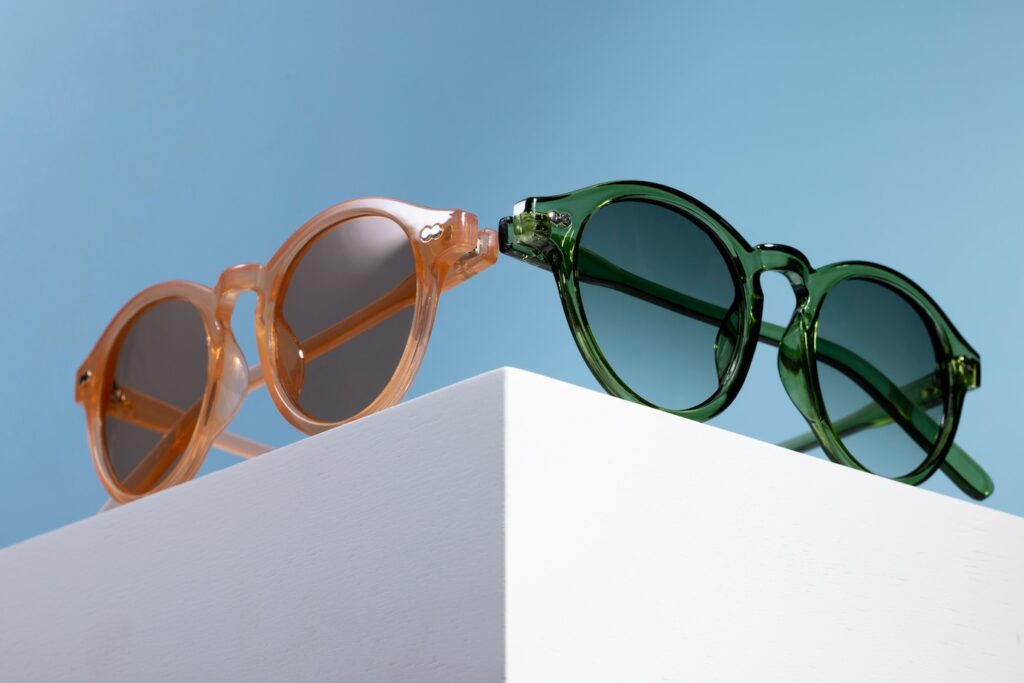WHAT ARE THE DIFFERENT TYPES OF GLASSES LENSES?
There are many factors to consider when choosing the frame for your glasses, but selecting the correct lenses is crucial. Although contact lenses and eye surgery are available as alternatives, eyeglasses have remained a popular choice for vision correction for many years. As a result of their ease of use, convenience, and versatility in correcting a wide range of visual impairments, eyeglasses remain the preferred option for many individuals.
There are various types of glasses lenses, including progressives, bifocals, polarized lenses, readers lenses, and blue-block lenses. Depending on the features of the lenses, glasses can provide a variety of benefits, including protecting the eyes from damage, reducing eye strain while reading or performing close-up work, providing clarity by reducing glare, and correcting vision deficiencies.
It can be difficult to choose the right lens from the many types available. But it doesn’t have to be a challenge when you understand their functions and match them to your visual requirements.
TYPES OF LENS MATERIALS
It was not uncommon for eyeglasses to be made of glass in the past. However, they are now made almost exclusively of high-tech plastics. Here are some examples of lens materials that have added technology for improved visual acuity and lens treatments.
-
A polycarbonate lens is lightweight, impact-resistant, and has a built-in UV protection, which makes it ideal for sports eyewear, kids’ eyewear, and safety eyewear.
-
The Trivex material provides a lightweight, thin alternative to polycarbonate that is highly impact resistant and better suited for sharp vision.
-
A high-index plastic lens is lighter and thinner than traditional lenses.
-
The aspheric lens provides a wider field of view and improved peripheral vision.
-
A photochromic or transition lens changes from clear to tinted as a result of exposure to sunlight.
-
The blue light blockers have a coating that reduces the amount of blue light entering.
-
A polarized lens reduces glare by blocking horizontal light with a chemical filter.
DIFFERENT TYPES OF GLASSES LENSES
There are many different types of eyeglass lenses available to suit almost any lifestyle or prescription.
Reading Glasses
During the course of aging, your vision may change, such as presbyopia, which can occur in the mid-40s. The natural lens in your eye becomes less flexible as you age, resulting in difficulty focusing on objects that are close to you.
If you do not have any other visual impairment, non-prescription reading glasses will be able to help you with the correct strength. You may need reading glasses if you observe the following symptoms of presbyopia:
-
A constant adjustment of distance between reading materials (books, digital devices) is necessary due to difficulty focusing and blurriness of images.
-
Having difficulty reading small print.
-
In order to perform close-up tasks, such as reading, more or brighter light is required.
-
A feeling of eyestrain and headaches while working close-up.
Sun Bifocals
It is important to note that bi-focal lenses include distance and near vision correction. If your eyes are unable to focus well due to presbyopia, these lenses assist you with switching between far vision and close-up vision.
The sun bifocals can be purchased in both polarized and non-polarized versions.
Blue Light Blocking Glasses
In the event that you spend considerable amounts of time in front of a digital device, such as a computer, phone, or tablet, you may want to consider wearing blue-light-blocking glasses. Blue light can cause our eyes to be overexposed just as it does in sunlight.
In addition to computer vision syndrome and headaches, eye strain, and visual fatigue can also result from this. By providing additional visual health protection, blue light blocking glasses are designed to reduce these risks by reflecting or blocking blue light from reaching your eyes.
Progressives
Using progressive lenses, multiple viewing distances can be corrected seamlessly, without visible lines, while preventing multiple viewing distances from being corrected simultaneously. On the bottom are reading corrections, on the middle are computer-distance vision corrections, and at the top there are no corrections.
Polarized Sunglasses
It is essential that you wear sunglasses with polarized lenses in order to protect your eyes from the damaging effects of the sun, regardless of the season. Polarized lenses block UV rays and reduce glare from reflective surfaces regardless of the season.
Sunglasses reduce glare and enhance clarity, as well as protecting your eyes from elements such as sand, dust, wind, and debris.
WHAT IS THE BEST LENS TYPE FOR YOU?
It is important to have the right glasses lens for your specific needs. Low Cost Glasses has an extensive selection of frames that will meet your needs, whether you are looking for readers, blue light blockers, sunglasses, or progressive lenses.
Feel free to contact us if you would like to place an order for a pair of glasses.
















